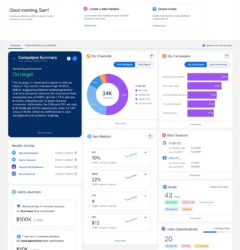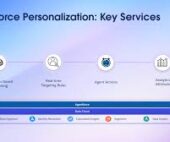Oracle announced last week that it is exiting the advertising business and will sunset its adtech by September 30. While the announcement is not surprising given the massive layoffs in 2022 affecting Oracle Advertising teams, the rapidity of Oracle Advertising’s decline is a clear indicator of how swiftly the digital advertising landscape can evolve. This move is likely just the first of many significant Changes in Advertising Changing CRMs.
What happened?
Oracle Advertising faced challenges beginning in 2018 and never managed to recover. Several forces related to data deprecation adversely impacted the business:
- New privacy regulations: The GDPR introduced stringent consent requirements, and Oracle struggled to make its social sharing add-on, AddThis, compliant. Unable to do so, Oracle withdrew AddThis from Europe and eventually sunset it globally last year. AddThis had been a crucial data source for Oracle, helping to build data broker segments and an identity graph, but it was not designed to capture consent before processing personal data.
- Growing consumer privacy awareness: Oracle faced a class-action lawsuit alleging it created “digital dossiers” on millions without their consent. Although some claims were dismissed, the lawsuit is ongoing.
- Walled gardens tightening control: Major tech companies like Meta, Apple, and Google became more restrictive about their data and its use by marketers. Following the Cambridge Analytica scandal, Facebook ended its Partner Categories program, which allowed advertisers to match Facebook user data with third-party data, including data from Oracle. This move cut off a revenue stream for Oracle.
- The demise of the third-party cookie: Data management platforms (DMPs) like Oracle’s BlueKai rely on third-party cookies to build audience segments. With the deprecation of third-party cookies, DMPs have become ineffective. Some, like Salesforce’s Audience Studio, are being retired, while others, like Adobe, are transitioning customers to customer data platforms (CDPs).
Changes in Advertising Changing CRMs
Retooling its acquisitions to function in a consent-driven and regulated environment would have required significant investment from Oracle. Given its track record with privacy law compliance, this would have been a daunting task, necessitating both rapid innovation and market trust in its solutions.
What does this mean for the advertising ecosystem?
Oracle’s exit from adtech marks a significant shift in the advertising ecosystem. The sharp decline in advertising revenue from $2 billion in 2022 to $300 million in 2024 suggests a major miscalculation by Oracle. Without demand- or supply-side platforms (unlike Google, Microsoft, and Amazon) and lacking a large audience base (unlike Meta, Disney, and Netflix), Oracle’s benefits as an adtech partner or acquirer were unclear. The key question now is whether Oracle’s intellectual property will find new ownership and continue in some form.
What does this mean for the marketing ecosystem?
The broader marketing ecosystem is likely to see more shifts as major players adapt to the new landscape. Leading martech vendors like Adobe and Salesforce have already transitioned from DMPs to CDPs. Adobe Real-Time CDP and Salesforce Data Cloud for Marketing are gaining market share, while Oracle has struggled in the B2C martech space. Oracle’s decision to cut investments in martech and adtech has significantly impaired its B2C market efforts, with products like Responsys failing to gain the traction that Eloqua has in the B2B space. Oracle also announced it will sunset related B2C marketing products like Oracle Maxymiser in the coming months.
These changes are just the beginning of a broader transformation in digital advertising, driven by evolving privacy standards, consumer expectations, and technological advancements. This marks the dawn of a new era in which agility and compliance will be key to success in the digital advertising and marketing landscapes.












